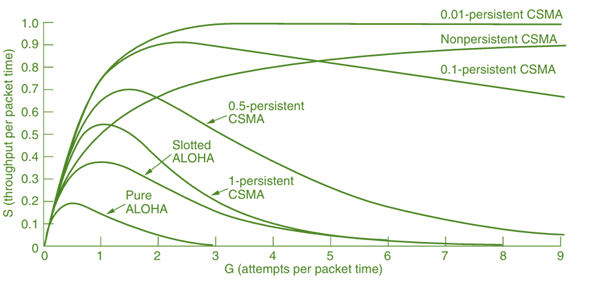Carrier Sense Multiple Access Protocols: Enhancing Network Efficiency
Carrier Sense Multiple Access (CSMA) protocols are essential for managing how multiple devices share a communication channel in local area networks (LANs). These protocols improve upon earlier methods like ALOHA by allowing stations to listen for ongoing transmissions before attempting to send their own data. This capability significantly reduces the likelihood of collisions, thereby enhancing overall network performance. In this article, we will explore the various types of CSMA protocols, their mechanisms, and how they contribute to better channel utilization.
Understanding CSMA Protocols
CSMA protocols operate on the principle of “carrier sensing,” where devices monitor the communication channel to determine if it is free before transmitting data. This proactive approach helps to minimize collisions—instances where two or more devices transmit simultaneously, resulting in data loss. The effectiveness of CSMA protocols is particularly evident in environments where devices can detect the activity of others, allowing for more efficient use of the available bandwidth.
Types of CSMA Protocols
1-Persistent CSMA
In 1-persistent CSMA, a station that has data to send first listens to the channel. If the channel is idle, it transmits its data immediately. However, if the channel is busy, the station waits until it becomes idle and then transmits right away. This method is termed “1-persistent” because the station transmits with a probability of 1 when it senses that the channel is free. While this approach can lead to efficient use of the channel, it does not completely eliminate collisions. If two stations become ready to send data at the same time after a busy transmission, they may both transmit simultaneously, resulting in a collision.
Nonpersistent CSMA
Nonpersistent CSMA takes a more cautious approach. When a station senses that the channel is busy, it does not immediately attempt to seize it. Instead, it waits for a random period before checking the channel again. This method reduces the chances of collisions compared to 1-persistent CSMA, as it allows for a more staggered approach to channel access. Although nonpersistent CSMA may introduce longer delays, it generally leads to better channel utilization, especially in networks with high traffic.
p-Persistent CSMA
p-Persistent CSMA is designed for slotted channels. When a station is ready to send data, it senses the channel. If the channel is idle, it transmits with a probability ( p ). If it does not transmit, it defers until the next time slot, repeating this process until it successfully sends its data or detects another transmission. This method balances the need for immediate transmission with the risk of collisions, making it a flexible option for managing channel access.
CSMA with Collision Detection (CSMA/CD)
While persistent and nonpersistent CSMA protocols improve upon ALOHA, they still face challenges with collisions. To address this, CSMA/CD (Carrier Sense Multiple Access with Collision Detection) was developed. This protocol allows stations to detect collisions while they are transmitting. If a collision is detected, the station immediately stops transmitting, waits for a random period, and then attempts to resend the data.
How CSMA/CD Works
In CSMA/CD, a station listens to the channel while transmitting. If it detects that the signal it receives differs from what it is sending, it knows a collision has occurred. This immediate response helps to conserve bandwidth and reduce wasted transmission time. The protocol operates under the assumption that the time it takes for a signal to propagate across the network (propagation delay) is critical. In a worst-case scenario, if two stations begin transmitting simultaneously, the time taken for the collision signal to return to the original sender determines how long it must continue transmitting before it can be sure that it has seized the channel.
Performance Comparison
 The performance of various CSMA protocols can be compared to that of ALOHA systems. Above graph illustrates the throughput versus offered traffic for different protocols, including CSMA with Collision Detection, 1-persistent CSMA, nonpersistent CSMA, and slotted ALOHA. Generally, CSMA protocols demonstrate superior performance due to their ability to sense the channel and adapt accordingly.
The performance of various CSMA protocols can be compared to that of ALOHA systems. Above graph illustrates the throughput versus offered traffic for different protocols, including CSMA with Collision Detection, 1-persistent CSMA, nonpersistent CSMA, and slotted ALOHA. Generally, CSMA protocols demonstrate superior performance due to their ability to sense the channel and adapt accordingly.
Conclusion
Carrier Sense Multiple Access protocols represent a significant advancement in network communication, providing mechanisms to improve channel utilization and reduce collisions. By allowing devices to listen for ongoing transmissions, CSMA protocols enhance the efficiency of data transmission in local area networks. As technology continues to evolve, understanding these protocols will remain crucial for optimizing network performance and ensuring reliable communication among multiple devices.
By implementing CSMA protocols, network designers can create more robust and efficient systems that meet the demands of modern communication. Whether through 1-persistent, nonpersistent, or p-persistent methods, the principles of carrier sensing continue to play a vital role in the development of effective networking solutions.
